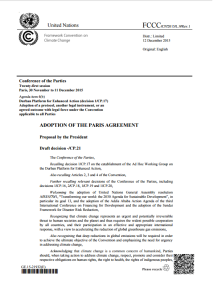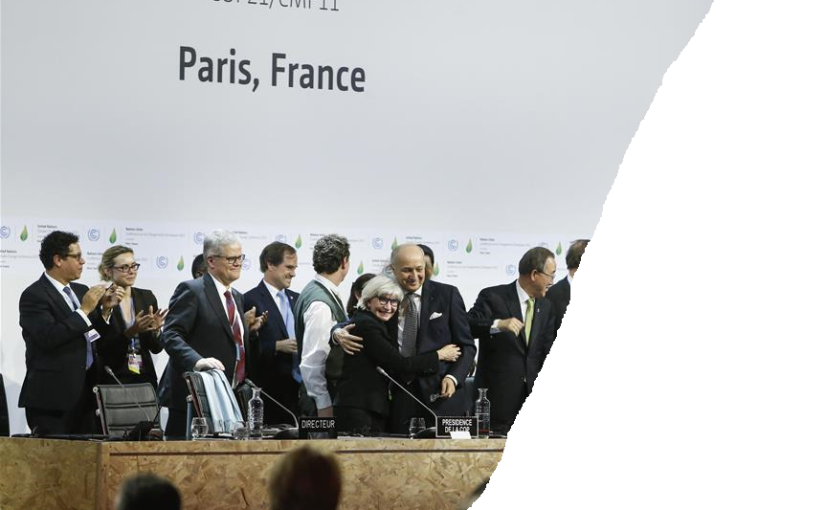Will the world succeed in significant mitigation of GHGs?
The Agreement – what has actually happened in Paris?
Last week, an historic agreement was reached in Paris. The importance of this conference has also been addressed in previous blog post.
What the agreement did indeed was to strengthen –some may say establish- a climate change regime, as it establishes a long-term goal of net-zero emissions, a mechanism to review progress and increase ambition at regular intervals (every 5 years, which is a common way to do review processes of international treaties of all kinds), and a framework for climate finance. International regimes are commonly defined as “principles, norms, rules, and decision-making procedures around which actors expectations converge in a given issue-area.”[1]
Key provisions are therefore:
- Transparency in and Review of Mitigations: States are to peak their emissions as soon as possible, plus achieving “net-zero” emissions by the half of the century. Furthermore, through Intended Nationally Determined Contributions (INDCs – the World Resource Insitute provides us with this wonderful map to track all the contributions: http://cait.wri.org/indc/#/map ), the target of limiting global warming to “well below” 2 degrees, or even to 1.5 degrees Celsius, should be reached.
- In the eyes of the well-infromed International Insitute for Applied System Analysis (IIASA), the 1.5 target is possible. Joeri Rogelj, researcher at IIASA, says “Global emissions must peak as soon as 2020 if we are to limit warming to 1.5°C by 2100.”
- However, some scientists are very sceptical if the 1.5 target is still feasible: an example: “We need stronger, short-term action,” said Steffen Kallbekken, research director at Cicero: “By the time the [INDCs] enter into force in 2020, we will have probably exhausted the entire carbon budget for the 1.5-degree target.”
- Climate finance:Developed countries agreed in Copenhagen to provide $100 billion annually in financial assistance by 2020 for developing countries to adapt to climate change and reduce emissions while growing their clean energy economies. The Paris Agreement acknowledges this $100 billion as a minimum for climate finance to be reviewed and increased “before 2025.” The agreement balances public funding between mitigation and adaptation, increasing pre-2020 support for adaptation for the most vulnerable countries already suffering the impacts of climate change.
The Implementation – what will happen outside Paris?
Continue reading Still incomplete – What happened in Paris will not stay in Paris
